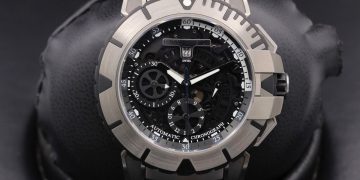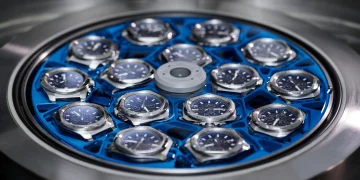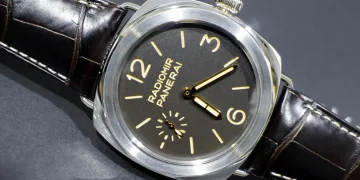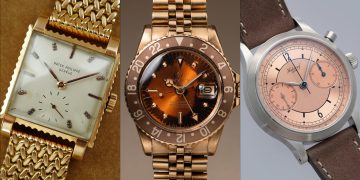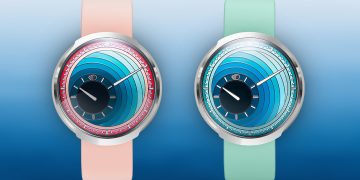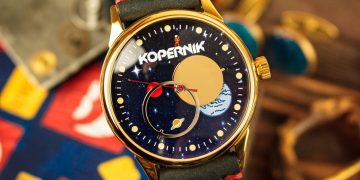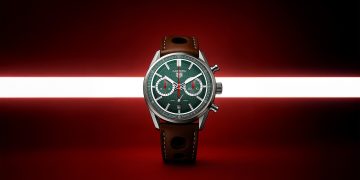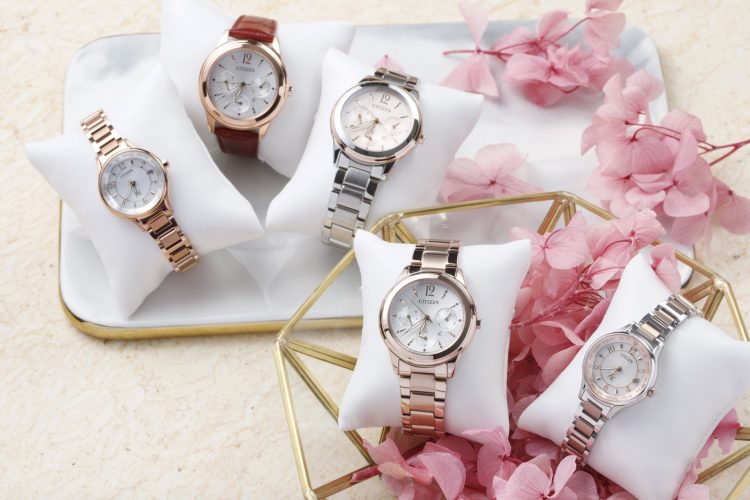Introduction:
The watchmaking industry has always been one of the most fascinating sectors in the luxury goods market, where tradition, craftsmanship, and design converge. Throughout its history, the design of watches has been influenced by numerous factors, including technological advancements, brand identity, and consumer preferences. However, in recent decades, one of the most significant driving forces behind innovation in the watch industry has been cultural diversity.
As globalization has continued to expand, the world of horology has become increasingly interconnected, with influences from various cultures shaping the designs of timepieces. Today, watchmakers are more conscious than ever of how cultural diversity can influence consumer expectations, aesthetics, and the technical aspects of watchmaking. This cultural exchange has led to a more innovative, multifaceted approach to watch design that reflects a broad spectrum of cultural sensibilities.
In this article, we will explore how cultural diversity has prompted the watch industry to adopt new and innovative design principles. We will also look at the ways in which cultural influences from around the globe have enriched the aesthetic and functional aspects of watches, pushing the boundaries of what is possible in watchmaking.
1. The Impact of Globalization on Watch Design
1.1 Global Exposure and Cross-Cultural Influences
Globalization has drastically changed the watchmaking landscape, leading to more widespread exposure to various cultural influences. This interconnectedness has resulted in a rich exchange of ideas, design aesthetics, and materials between cultures, all of which have helped shape the evolution of modern watch designs.
For example, the Swiss watchmaking tradition, long regarded as the standard in luxury timepieces, has increasingly drawn inspiration from Asian, Middle Eastern, and African aesthetics, blending Eastern minimalism with Western craftsmanship. Brands like Jaeger-LeCoultre, Omega, and Longines have embraced these influences to create timepieces that resonate with global audiences, pushing the boundaries of traditional Swiss designs.
The growing influence of Asian markets, particularly China, has played a key role in driving these design shifts. Chinese consumers, known for their appreciation of luxury goods, have brought with them a distinct sense of elegance and refinement, which has encouraged watchmakers to create more sophisticated and ornate designs. In turn, Swiss brands have developed limited-edition models specifically tailored to Asian tastes, such as incorporating Chinese motifs or lucky symbols to appeal to cultural preferences.
1.2 Designing for a Global Audience
With a more diverse customer base, watchmakers must cater to different tastes, customs, and preferences. For example, while minimalist designs are highly appreciated in Japan, where simplicity and understated elegance are central to aesthetic principles, more ornate and intricate designs might appeal to consumers in the Middle East or India, where decorative craftsmanship is highly valued.
In response to these varied demands, watchmakers have embraced a more adaptive approach to design, creating pieces that reflect the diversity of their audiences. Watches today are no longer just about functionality or luxury; they are also cultural statements. This cultural sensitivity is evident in how brands design their dials, case shapes, and even the materials used in the watches.
For instance, a watch brand aiming for global appeal might use ceramic materials (popular in the East) for its cases or incorporate multi-colored gems (valued in the Middle East) into its design. This focus on cultural diversity has enabled brands to tap into different consumer bases while still maintaining a sense of identity and quality.
2. Cultural Inspiration in Watch Aesthetics
2.1 The Influence of Traditional Craftsmanship
Many watchmakers have incorporated elements of traditional craftsmanship from around the world into their designs. Whether it is the intricate enamel work from Europe, the lacquered dials from Japan, or the goldsmithing techniques from the Middle East, these diverse cultural elements provide endless possibilities for creative expression.
Take, for example, Breguet’s use of engraving, a centuries-old technique that originated in France, which draws inspiration from French Baroque art. Breguet has transformed this intricate design into a hallmark of its luxury timepieces. Similarly, Japanese watch brands like Grand Seiko have incorporated Zen-inspired aesthetics, such as clean lines, polished surfaces, and nature-inspired dials, which are rooted in traditional Japanese art and culture.
In the same vein, Patek Philippe and Vacheron Constantin have drawn from European cultural heritage and the intricacies of Swiss enamel work and handcrafting techniques. The integration of cultural diversity in these luxury timepieces has resulted in a fusion of art, craftsmanship, and cultural history that elevates the value of the watch.
2.2 Design Fusions in Modern Watch Collections
The combination of diverse cultural influences has led to a more experimental approach in the world of luxury watches. For instance, the introduction of sporty luxury designs, such as those seen in Audemars Piguet’s Royal Oak or Richard Mille’s RM series, reflects a modern aesthetic that appeals to a global audience with its mix of tech materials and bold forms.
Moreover, the use of limited-edition designs based on cultural references has become increasingly popular. For example, Rolex’s special edition for the Chinese market, featuring intricate dragon motifs, blends Swiss precision with traditional Chinese symbolism, resulting in a watch that appeals to both local pride and global luxury taste.
Brands are now not only embracing their own cultural heritage but also drawing inspiration from the cultures of their growing international clientele. This has led to the emergence of hybrid designs, which mix traditional forms with innovative materials and technologies. For example, watches with ceramic cases, carbon fiber dials, or titanium straps are now being introduced in luxury collections, offering a unique marriage of innovation and cultural relevance.

3. Technological and Functional Innovation Spurred by Cultural Diversity
3.1 The Fusion of Traditional and Modern Technologies
Cultural diversity has not only influenced the aesthetics of watch designs but has also prompted the exploration of innovative functions and technologies in watchmaking. For example, Japanese watchmakers have been pioneers in quartz technology, which revolutionized the industry in the 1970s. Today, Seiko and Citizen continue to push the boundaries of watchmaking with their integration of solar-powered movements and spring-drive technology.
Meanwhile, Swiss brands have remained focused on mechanical complexity, with a heavy emphasis on complicated movements such as tourbillons and perpetual calendars. This blend of cultures has led to a growing interest in combining Eastern technological advancements with Western craftsmanship, resulting in watches that are both functionally superior and aesthetically unique.
3.2 Smartwatch Integration with Traditional Design
In recent years, the demand for smartwatches has prompted traditional watchmakers to incorporate digital technology into their designs. This shift has led to the creation of watches that combine cutting-edge technology with classic design elements. The Apple Watch, for example, has become a global phenomenon, influencing not only the digital aspect of modern timepieces but also how traditional luxury watchmakers like Tag Heuer and Louis Vuitton incorporate digital features into their timepieces.
Luxury brands have begun offering hybrid smartwatches that retain traditional designs, such as mechanical hands and dials, while offering digital functionalities like fitness tracking and smart notifications. This integration of modern technology with classical watchmaking techniques has led to innovative new designs that cater to a broad range of tastes, further demonstrating how cultural diversity can drive innovation not only in aesthetic but also in functionality.
4. Cultural Diversity and Sustainability in Watch Design
4.1 Sustainability as a Global Concern
As cultural awareness grows, there is a significant shift in how sustainability is approached in watchmaking. Consumers across the globe are becoming more conscious of the environmental impact of their purchases. The increasing awareness of eco-friendly materials and ethical sourcing has prompted watch brands to think more carefully about how they manufacture their timepieces.
Swiss watchmakers have responded to this by creating watches using recycled metals, eco-friendly packaging, and sustainable production practices. In countries like Sweden and Norway, where sustainability is a key value, brands are focusing on incorporating natural materials such as wood or stone into their designs.
This growing focus on sustainability reflects a shared cultural value that transcends national borders and is now influencing how the entire industry approaches design. Cultural diversity has thus driven not only aesthetic and functional innovation in watches but also has contributed to more ethical and environmentally conscious design practices.
5. Conclusion: Cultural Diversity as a Catalyst for Innovation
In conclusion, cultural diversity has played a crucial role in driving the innovation seen in today’s watch industry. Through the exchange of ideas, aesthetics, and technologies, watchmakers have embraced new design principles that reflect the broad cultural influences of their global clientele. This fusion of tradition and modernity, along with the incorporation of diverse cultural elements, has led to an exciting era in horology, where creativity and technical expertise meet.
By embracing cultural diversity, the watch industry has expanded its design vocabulary, resulting in more inclusive, innovative, and functional timepieces. As the world continues to grow increasingly interconnected, the influence of global cultures on watch design will likely continue to drive the industry forward, ensuring that the world of horology remains as dynamic and cutting-edge as ever.



